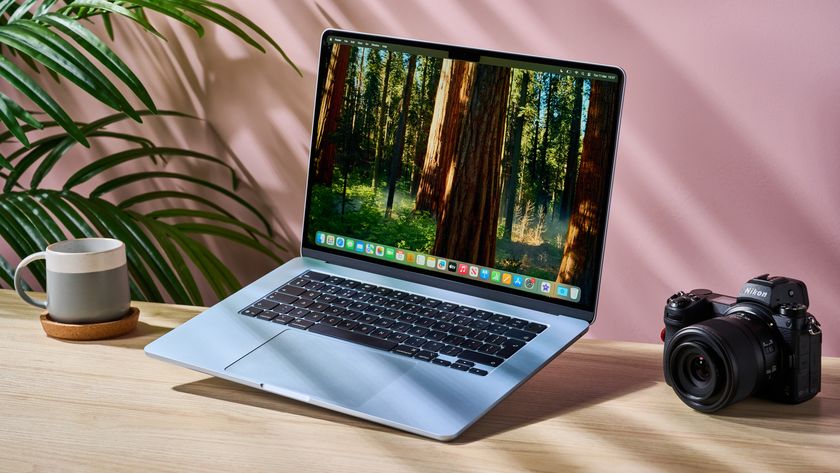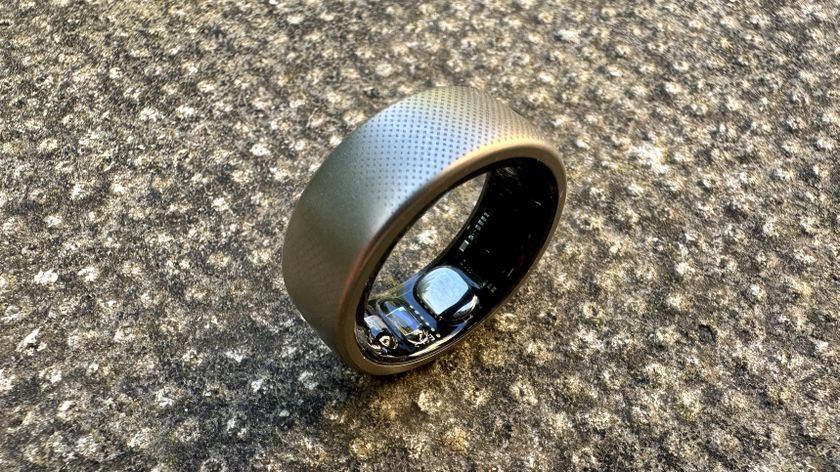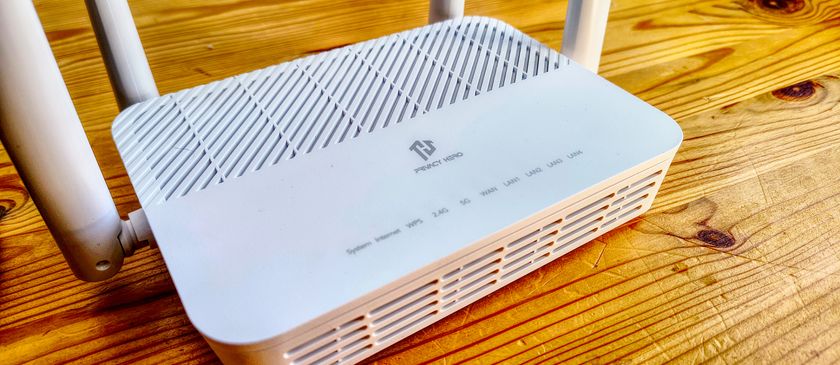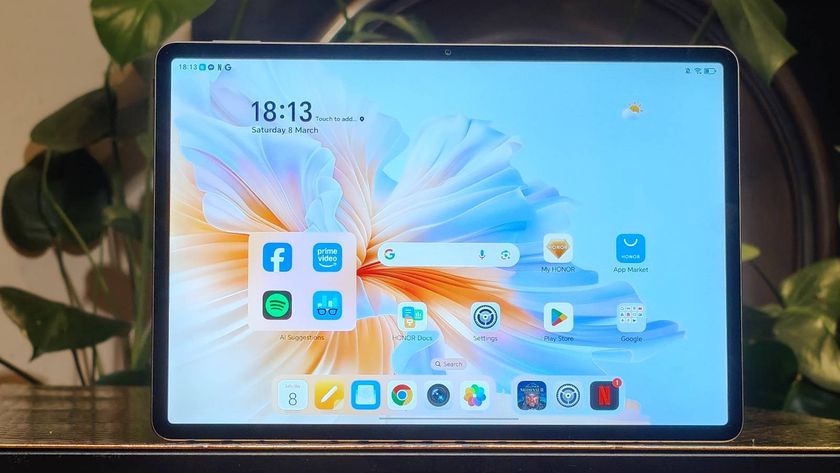TechRadar Verdict
Pros
- +
Good price
- +
Decent build quality
Cons
- -
Awkward controller
- -
Some odd UI foibles
- -
Needs more, deeper games
- -
Fairly low specs
Why you can trust TechRadar
Ouya was arguably the thing that put Android games consoles in our collective minds, causing a frenzy that resulted in the likes of Mad Catz M.O.J.O, Nvidia Shield and the GameStick here.
All these consoles have their own little variations of the theme, and the GameStick's party trick is that it's a stick that plays games.
Well, there's nothing wrong with a descriptive name. The GameStick consists of a wireless controller, with a slot in the top that holds a removable HDMI dongle – that's the game console part. Like Google's Chromecast, it's just an HDMI port sticking out of a small plastic rectangle.
Pop it in the back of your TV and it's connected, or take it out and slot it into the controller to take away with you.

Well, sort of. You'll find this becomes a running theme with the GameStick, but it's not quite as smart as it looks. The dongle still needs power other than that the HDMI port provides, so you also need the USB cable and possibly the mains attachment for it.
It comes with a couple of USB cables in the box (one for charging the controller, one for powering the console), a mains adapter for USB plugs, and a short HDMI extender, in case you can't fit the GameStick in the space behind your TV or AV box. The USB cable intended for the console is 1.5m long, which is a bit short for our liking, but it has a Y connector with an extra female USB port, so you can charge the controller and power the console from the one mains connection.
The GameStick itself is a nice little design, if simple. It's just a solid square of plastic, with plenty of holes in the casing to let the heat from its ARM system-on-a-chip out.
Specs
The ARM chip in question is an Amlogic 8726-MX, combining dual ARM Cortex A9 cores with an ARM Mali 400 GPU. What does that mean in real life? In theory, it's competitive with the Nvidia Tegra 3 found in the Ouya, which is fine for a lot of mobile games. But in a larger context, consider this point: both of these chips are less powerful than the iPad 3. Not the iPad 4, which was much more powerful than the 3. Not the iPad Air, which is much more powerful again. The iPad 3.
You get 8GB of built-in storage, but only 3GB of it is available for storing games. However, there's a microSD card slot for adding more space that you can move games to (or play media from).

Still, a games console is made or broken by how it plays, not by its raw specs. Sadly, the GameStick gets off to an awkward start from the moment you pick up its Bluetooth controller. And we literally mean awkward – you'd swear the thing was made by someone who thinks ergonomics is something to do with finance.
It's just a massive slab, with no concession to the shape of the human hand at all, except that the buttons are positioned nearish to where your thumb goes. It's as wide as an Xbox 360 controller, but doesn't taper in at the top like Microsoft's does (or the PS3 controller, or any comfortable controller ever), so it's just wide all the way up. It's not curved either, with a flat front, back and sides – as if the NES controller was the peak of hardware design.
For most people to reach all of the buttons comfortably will just mean holding it a little differently to most pads, and it's still perfectly usable – it's just less comfortable than others. And unlike the Ouya, you can't just use any Bluetooth controller you like – it has to be official GameStick controllers.

Even ignoring the ergonomics, much of it just isn't as good as controllers from the big consoles. The shoulder buttons (labelled L1 and R1 despite there being no second buttons) are hinged on the outside, rather than towards the centre, meaning that you get less responsiveness in the most comfortable place to press it. The D-pad is fairly stiff, which doesn't fit well with it having quite a long travel – when things get tricky, it doesn't feel nimble.
On the other hand, the analogue sticks are good. They're massive, looking almost comical, but they're made of grippy rubber with a good-sized ridge, and offer enough resistance to feel like you're moving them with precision.
Interface
Turning the GameStick on for the first time and activating it is an annoying experience, requiring you to manually adjust how it displays to fit your screen properly (which some games will also then do as well – where is the simplicity of consoles?), then input your Wi-Fi password using an on-screen keyboard that infuriatingly moves your cursor to the bottom corner when you switch to symbols/numbers.
Once you're online, it gives you an activation code that you then have to trot off to your computer to input, and sign up for your GameStick account, which was also a poor experience – the mandatory date-of-birth fields couldn't be scrolled, so we had to say we were eight years old, but it then let us choose our age restriction for games as 17+ without question.

Once you're in, you finally see the main interface, which is fairly nice – there are elements reminiscent of both Sony's and Microsoft's console interfaces, but it has its own look. Everything's in a grid, with games options along the top edge, account options along the left edge, and content of some kind filling the middle, depending on what you've selected.
The first thing you'll want to do is find some games, though, and it's off to an imperfect start there. There's a Featured section, a Popular section, and an All section. And that's it – no narrowing down to free games, no genre options. Oh, and the Featured section was empty throughout our time with the console.

If you want to find something specific, the All section is at least in alphabetical order, but that's only manageable while the game count remains low (45 at the time of writing). It's also not even that easy to find things in order: the ordering goes left-to-right across the rows of games, but because of the way things are shown in columns of three, your eye naturally scans up and down, instead of vertically.
Once you find a game, you can buy it with money in your GameStick wallet (that you don't connect it straight to a credit card feeds into the overall feeling we get that PlayJam considers the GameStick as aimed at kids), or grab it immediately if it's free, and download it (which it can do in the background).
For some reason, games don't install once you download them – you have to do that manually afterwards. Actually, we think we know the reason why: this process totally locks the GameStick up. Installing ShadowGun took three minutes, during which the console was totally unresponsive. We played a few games on our iPad while we waited. Mostly the same ones you can get on GameStick.

Almost all the games on the GameStick store cost money, which isn't a problem, but it could really do with more ways to tempt people in. Ouya's plan to make all games at least free to try, if not more broadly free-to-play, helps to build up confidence in the quality of games on the platform. It's the same with the free trials for Xbox Live Marketplace games on the Xbox 360 – confidence to purchase.
But with GameStick, that confidence needs help to build. We don't advocate that all games should be free or anything, but when you have no idea how well these games will run, or how well the controls convert (many will be known to gamers as phone/tablet games, after all), we think a universal trial option would be helpful – or that developers consider including this themselves, using in-app purchases for the full game. We're not criticising the GameStick for this so much as just pointing it out, though – you might consider a lack of free games/trials a problem, or you might be happy paying. The games cost between £2 and £5 each, generally.
Game quality
As you'd expect, the quality of games is a little up and down. There are some solid smartphone games that have translated well, and others that feel clunkier. In some cases, that's due to an iffy port (a few games have frame-rate issues, but many are smooth), and in some cases it's down the controller, with the clunky D-pad making some games feel quite heavy to control, for example. In one game, the analogue controls appeared locked to increments instead of being truly analogue, but in others the sticks themselves seemed much smoother.
As is the case with pretty much all Android consoles, though, the choice you have leaves questions. Ouya at least offers some classic RPGs and older console games, so we hope to see these come to GameStick too, but right now it's large only very light games. If you're happy with having games designed for mobile stints as your console experience, well okay then. But we think most gamers will want to at least have the options of getting something they can get their teeth into. ShadowGun may look great, but it's simply nowhere near the quality or depth of the Gears of War games it was inspired by.

Though the GameStick intrigued us when it was first announced, the final result has suffered from time passing, and some ill-advised decisions. There's a lack of polish in the software in some areas, but this can be forgivable if fixed with an update. The relative lack of power also doesn't have to be such a major issue, if games are optimised. But the uncomfortable, slightly clumsy controller is stuck as is, without the option for replacing it with a third-party one, as with the Ouya (which had its own controller problems).
Outside of games, there's little to really differentiate the GameStick either. It has some media applications, but no Netflix, LOVEFiLM, Sky Go or iPlayer apps mean it fails to stand out as a streaming option.
Without being high quality in and of itself, the GameStick then stumbles by offering nothing to really set it apart from everything else. The Ouya is hackable, at least, but the GameStick doesn't have anything that could really sell it in the same way. Something like built-in streaming to YouTube or Twitch, for example, would at least give us something new, but no.

The GameStick's price is its only hope, really, because viewed outside of that context, it's not appealing. The games feel like more effort to play compared to the phone/tablet version they were born from, despite having physical controls. At £80, this is much cheaper than a tablet that performs well enough for gaming, so for some, it might seem okay as a kids' console – but we'd say it needs the free trials to really fit that role.
Verdict
The thing is, while there's much about the GameStick that's inoffensive, that's really the best we have to say about it. It offers nothing meaningfully unique, and is almost universally either a little behind or considerably behind other consoles in other areas. There's the potential for something good in the idea for the GameStick, but it remains unrealised here.













Millions of Americans are missing out on cheap unlimited cloud storage - how to check if you are one of them

Netflix launches trailer for Black Mirror season 7, giving us a look at its first-ever sequel episode and an unexpected returning character

I tested Anker’s cheapest wireless charging stand, and I can’t argue with the value, even if it’s not fast with today’s phones





